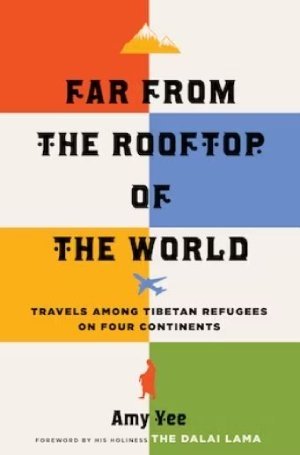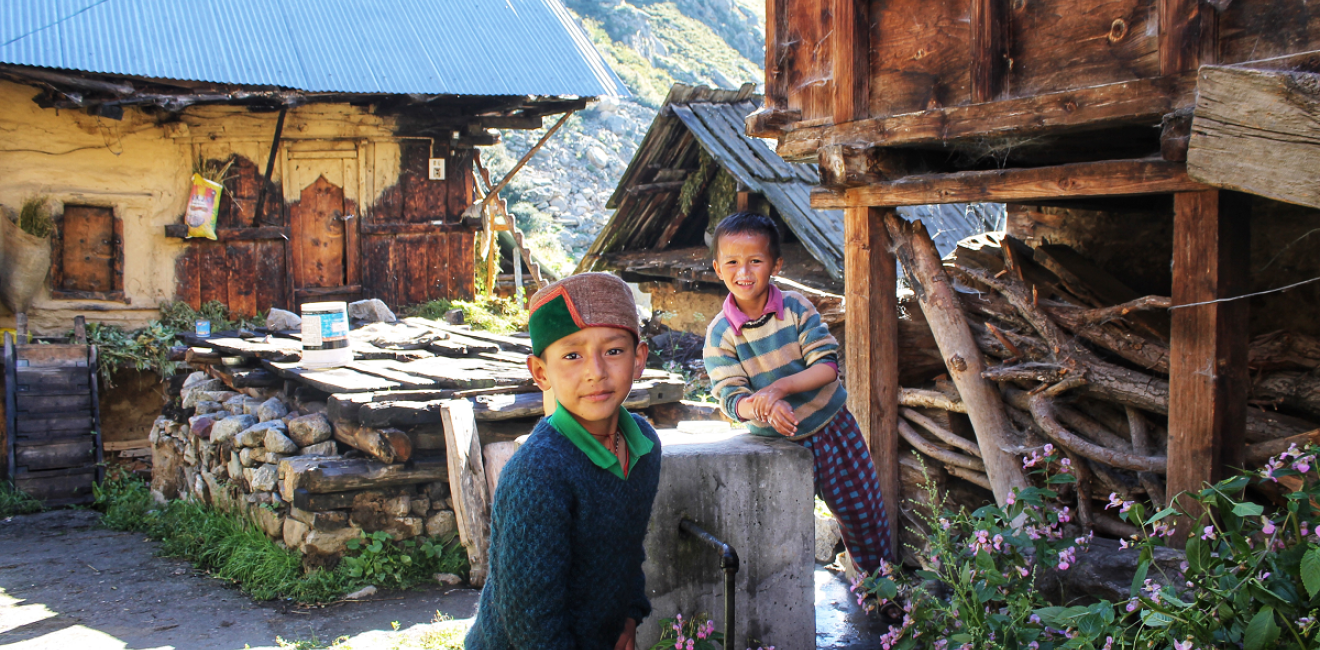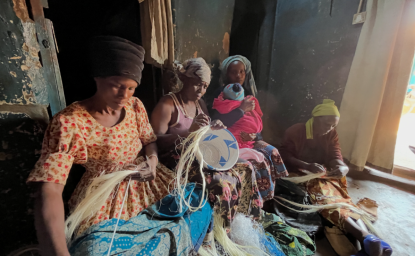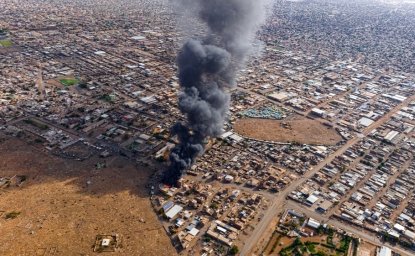A Window to the Rooftop: How Amy Yee’s Book does Refugee Narratives Right
Joshua Peng
During the summer of 2018, my roommate and I walked along an unmarked country road in Sichuan Province, China, picking flowers for a girl across the schoolyard that he’d taken a liking to.
July in Sichuan will cause a man to wilt, but the foliage to grow tall. In the hour between the end of class and the call to dinner, we retraced our steps, clutching all varieties of lilies, peonies, and primroses in our sweaty palms. As the school gates came back into view, my roommate began expressing doubts. Was he worried about rejection? Or that her friends might gossip? To my surprise, it was none of these things—he was afraid of expulsion.
At any other school, this might have been a ludicrous concern—more social anxiety than academic devotion. But this was a traditional Tibetan art school nestled well inside of the province. Learning to paint thangka, an art form depicting ornate Buddhist deities and mandalas over large cotton and silk canvases, was an unparalleled opportunity for a student body that was chosen from the impoverished and orphaned of Tibet. In exchange for their education, the administration demanded discipline that befit an institution housed behind unfriendly borders. This education was the best chance that my roommate had of lifting himself out of poverty and he was not willing to stake that on a crush. I watched sadly as he abandoned our bouquet.
My memory of the thangka school is not just colored by the hillside flora or the artwork that covered the classrooms. It remains vivid due to the contrast of the extraordinary within the mundane. Having connected with my roommate over feelings and experiences that are universal, I was surprised by his decision to suppress them. The surprise that I felt forced me to think more deeply about the differences between our lived experiences, and in doing so, made me consider the struggles a person may encounter far away from home.
In Amy Yee’s book, Far From the Rooftop of the World: Travels Among Tibetan Refugees on Four Continents, the contrast between the extraordinary and the mundane is what makes her accounts of Tibetan refugees so powerful. An award-winning journalist formerly based in New Delhi, Yee spent seven years living in India, a year in Bangladesh, and reported from ten countries in Africa from 2016 to 2018. Yee began writing Far From the Rooftop of the World in 2008, and over the course of more than a decade, her interactions and correspondences with her Tibetan contacts blossomed into a non-fiction narrative that is among the first of its kind. Yee offers an intimate portrait of refugees like Topden, Deckyi, and Norbu as they clamor for normalcy, giving the reader the sense that they are right there by their sides as life unfolds.

In this book, Yee guides her audience through themes such as the urgency of learning a new language, the meaning of racial and ethnic differences between displaced people and their host countries, the education of refugee children, and the importance of establishing a community. Yee creates a feeling of kinship for the protagonists in her story that is often illusive in non-fiction.
On the theme of language, Yee illustrates how juggling Tibetan, Mandarin, Hindi, and English can introduce additional barriers to life’s daily happenings. The borders that refugees encounter between themselves and safe haven are not just physical:
“Deckyi wasn’t used to asking people for help with mundane tasks like buying vegetables at the market where Indian vendors spoke Hindi and English. She felt like a child.” (Yee, 141).
“And there were the everyday pitfalls. One Tibetan didn’t realize how far away a cleaning job was and ended up paying fifty dollars for a taxi ride to outer Sydney…Another Tibetan got a customer satisfaction survey from the bank and thought it was an exam he needed to take…Everyday tasks and seemingly simple interactions could be daunting and demoralizing.” (Yee, 217).
On the role of race and ethnicity, Yee recounts how Tibetan refugees such as Sonam and Yeshi can distinguish between the actions of the Chinese government and the ethnically Chinese. However, they still experience pain and frustration from discrimination directed against them:
“[Sonam] wasn’t scared of Chinese people. He matter-of-factly told me he ‘had a lot of Chinese friends in jail.’” (Yee, 218).
“While the Dalai Lama espouses nonviolence as a spiritual leader, most Tibetans are regular human beings. And humans express frustration, anxiety, anger, and grief in a range of ways” (Yee, 86).
On education, Yee illustrates how efforts by refugees to teach their children new skills while retaining their culture can be both uplifting and insufficient:
“At the school they had to hand-wash their clothes in cold water and, like other Tibetan children in India, live without many creature comforts. Unsurprisingly, [the] Australian-born kids hated it.” (Yee, 213).
On the importance of community, a young Tibetan named Khemrab spoke to Yee after an audience with the Dalai Lamai about the beauty of seeking refuge:
“Did this Americanized, liberal arts college Tibetan guy identify himself as Tibetan? He replied decisively: ‘I am 40 percent Tibetan, 60 percent Indian…Any people who are devoid of land create their own small community wherever they go. That’s the positive side of being a refugee. It’s also beautiful” (Yee, 69).
Through these vignettes of Tibetan refugee life, as well as hundreds more that fill the pages of Far From the Rooftop of the World, Yee provides the information and insights of a scholarly journal through well-crafted stories—stories that help us to better understand events and conditions that real people are subject to today. With a style of reporting refined by decades on the ground in India, Bangladesh, Nepal, and Pakistan, Yee’s work is an important addition to the emerging literary tradition of narrative non-fictions about the plight of Asian refugees.
“One benefit of working on this book for so long is that it afforded the chance to do a rare longitudinal study told through an even rarer lens of narrative,” writes Yee.
Yee’s focus on authentic lived experiences—stories that could only be written with deep and trusted connections—establishes a model for responsible and effective refugee representation. Recalling books like Last Boat Out of Shanghai and Taipei People, Yee’s Far From the Rooftop of the World will become essential reading for understanding the plight of modern-day Tibetan refugees.
Far From the Rooftop of the World provides a glimpse into the plight of refugees, and nuanced hues to a people with an ancient history, caught in the political crosswinds of an unfriendly new world. It is a book about borders, laws, language, religion, lived experience, and home. It is a book that brings solace to a young man who really did wish that his friend could have given a girl some flowers.

Refugee and Forced Displacement Initiative
The Refugee and Forced Displacement Initiative (RAFDI) provides evidence-based analyses that translate research findings into practice and policy impact. Established in 2022 as a response to an ever-increasing number of people forcibly displaced from their homes by protracted conflicts and persecution, RAFDI aims to expand the space for new perspectives, constructive dialogue and sustainable solutions to inform policies that will improve the future for the displaced people. Read more








